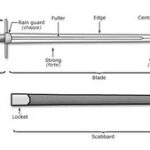Legend has it that during the 1400’s an important samurai warlord…was having tea in the morning discussing a battle strategy with his patrol leaders. A servant by the name of Genamai was serving hot tea to the group. Leaning over to give tea to the warlord, rice that he had surreptitiously taken for a morning snack fell out of his pocket into the steaming hot tea.
Some popped upon hitting the hot tea. The warlord was incensed, jumped up brandishing his samurai sword he promptly cut of Genamai’s head in one fell swoop. He then sat down to continue the meeting. Despite the fact that the tea had been tarnished he drank it anyway. The flavor was very unique and he enjoyed it tremendously. In honor of poor Genamai he pronounced that this rice and tea be served every morning and be called Genmaicha (cha being the name of tea in Japanese. )-From tealaden.com
The first time I ever had genmaicha, it was a fabulous pan-sensory experience for sure; it was at a hip coffeehouse, where the tea bags were held open in the cup, dangling into the water over the rim by a teeny wooden dowel. The tea leaves were exposed, and in the extreme fragrant, emerald green moss of leaves, I could see small little pieces of popcorn poking around; and upon tasting the golden liquid, I was absolutely wowed. It was like absolutely nothing I have ever tasted before-profound, with a perfect balance of earth, air, and sea. Wait a minute, “sea?” Yes, somehow to me, genmaicha has a vaguely distant and kind oceanic taste. You’re just going to have to try it for yourself to see what I mean.
Luckily, you don’t have to seek out a hipster joint to do it. You probably already have the fixins’ for genmaicha, or brown rice tea, in your kitchen cupboard. Follow the easy instructions below to make your own.
Items needed
Green tea, either loose or tea bags
Brown rice, hulled
Water
French press coffee pot, saucepan, or tea strainer
Non-stick skillet
Instructions for roasting the brown rice
Place ¾ cup brown rice in a non-stick skillet, and roast over low to medium heat. Do not use any kind of oil or cooking spray. A dry roast is important not just to ensuring the proper flavor and texture, but any oils will transfer (badly) into the final tea. Using a wooden cooking utensil, stir and spread the rice around for approximately 3-5 minutes, until a pungent, nutty aroma is produced, and the rice darkens a bit. If you’re lucky, you might get some of the rice to pop like popcorn. This is desireable, but not necessary. If you feel like your rice is properly roasted and finished and there are no popped grains, it’s better to take them off the heat before they burn than to hold out for popcorn. You can continue roasting with a just tablespoon or so, while the bulk of roasted rice is off the heat, if you definitely want to try for popped grains.
When finished, transfer the rice into a ceramic bowl or dish to cool, then to any kind of small, airtight storage container for later use. You can store the toasted rice separately, or mix in with loose green tea to form a ready-for-use genmaicha mixture. A note: you do not have to wait for the rice to cool initially before using it to make tea.
Instructions for preparing the genmaicha
There are several easy methods to prepare your DIY genmaicha. The entire trick is simply incorporating your roasted brown rice into the normal steeping process, along with your green tea leaves. The only other thing to consider is proportion. I personally like a lot of brown rice roasted flavor in my genmaicha, so I use a ½ and ½ ratio; that is, 1 part green tea, to 1 part brown rice. I suggest starting with a smaller rice proportion, though-1 part green tea to ¼ part brown rice. The roasted taste is very strong and can overwhelm an uninitiated palate. If you find you would like more rice flavor, simply increase the amount used accordingly the next time you prepare the genmaicha. Below are various methods to make the tea.
Coffee press method
Those with a coffee press are in luck; this is a very easy and visually lovely way to make genmaicha. Loose green tea leaves must be used. If you only have tea bags, simply tear the bags open and dump the contents into the press. Stick with the proportions of tea and rice above-for every tablespoon (or whatever measurement) of tea used, use ¼ tablespoon roasted rice. Place the roasted rice in the press along with the green tea. Next, pour almost-boiling water into the press. Use the same amount of water you would use to brew your tea normally. If you aren’t in the habit of steeping tea in a coffee press or at all, use approximately 1 ½ cups to each tablespoon of tea. Obviously, personal preferences will vary.
Saucepan method
Using a regular saucepan and strainer, you can create genmaicha by another infusion method. Simply take the proportions of green tea, rice, and water listed above, and bring to a near-boil in a saucepan. Strain into a cup and enjoy.
Tea strainer and tea bad method
I highly recommend purchasing an individual tea strainer to make single teacups of genmaicha. They act as tea bags, and can be easily loaded with the loose tea and toasted rice mixture. Simply use the 1 and ¼ proportion as above.
You can also simply steep a bag of green tea as you normally would in a cup of hot water, and add the toasted rice loose in the cup. Simply strain it before drinking.
Notes
It is traditional to drink genmaicha straight, without any kind of added sweetner or cream. However, despite its unorthodoxy, I’m all about honey and cream, and I find it makes a wonderful chai. You simply can’t go wrong however you prepare it. The toasted rice flavor adds such a rich dimension that there will be no mistakes. Also, because of the novelty of the popcorn, it’s a wonderful way to engage kids in cooking. A little bit of the rice and popcorn can even be added to herbal teas for children.
Sources:
Genmaicha, Tea Laden, http://www.tealaden.com/product/genmaicha-japanese-63.cfm


